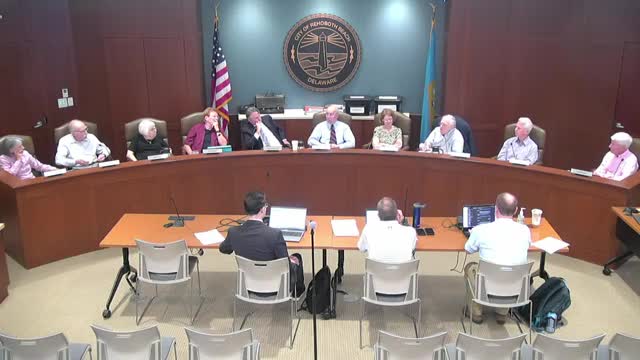Planning Commission Faces Controversy Over Stealth Antenna Design
July 12, 2024 | Rehoboth Beach, Sussex County, Delaware

This article was created by AI summarizing key points discussed. AI makes mistakes, so for full details and context, please refer to the video of the full meeting. Please report any errors so we can fix them. Report an error »

In a recent government meeting, officials engaged in a detailed discussion regarding the implications of runoff from a proposed parking garage and the compliance of a new antenna structure with local codes. Concerns were raised about the potential environmental impact of runoff containing oil, grease, and heavy metals, which could flow into the storm drain system without proper filtration. Officials emphasized the importance of adhering to local regulations regarding stormwater management, noting that unfiltered water discharges are no longer permitted.
The conversation shifted to the proposed antenna, which has undergone several redefinitions over the past five years. Initially presented as an architectural embellishment, it was later classified as an antenna, raising questions about its compliance with federal and local stealth antenna definitions. One official argued that the current design does not meet the necessary standards for stealth, as it is visibly identifiable as an antenna. The discussion highlighted the need for any such structure to blend into its surroundings to be considered compliant.
Another official suggested that the antenna could serve a dual purpose as an emergency communication system, proposing that alternative designs could achieve this goal without violating existing codes. However, the consensus was that the current proposal does not meet the required definitions and standards, and any approval would necessitate a variance from the board of adjustment.
The meeting underscored the complexities of balancing development goals with environmental regulations and community standards, as officials navigated the technical definitions and implications of the proposed projects. The outcome remains contingent on further evaluations and potential adjustments to ensure compliance with local codes.
The conversation shifted to the proposed antenna, which has undergone several redefinitions over the past five years. Initially presented as an architectural embellishment, it was later classified as an antenna, raising questions about its compliance with federal and local stealth antenna definitions. One official argued that the current design does not meet the necessary standards for stealth, as it is visibly identifiable as an antenna. The discussion highlighted the need for any such structure to blend into its surroundings to be considered compliant.
Another official suggested that the antenna could serve a dual purpose as an emergency communication system, proposing that alternative designs could achieve this goal without violating existing codes. However, the consensus was that the current proposal does not meet the required definitions and standards, and any approval would necessitate a variance from the board of adjustment.
The meeting underscored the complexities of balancing development goals with environmental regulations and community standards, as officials navigated the technical definitions and implications of the proposed projects. The outcome remains contingent on further evaluations and potential adjustments to ensure compliance with local codes.
View full meeting
This article is based on a recent meeting—watch the full video and explore the complete transcript for deeper insights into the discussion.
View full meeting
